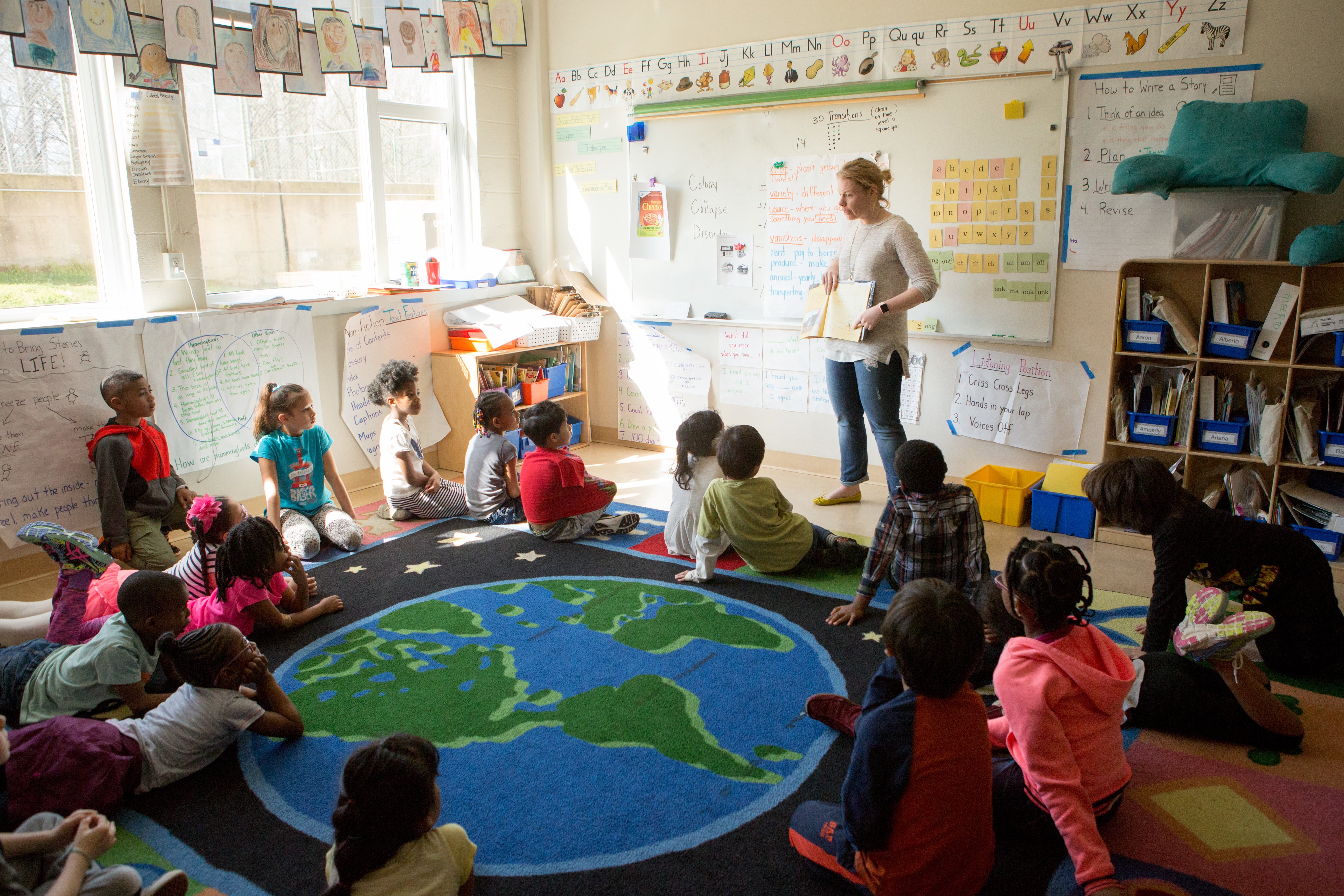After wrapping up the school year last week, kindergarten teacher Nicole Damm was right back in the classroom Monday planning summer school lessons.
She’s working this summer to help her students — but also for the extra cash. As a first-year teacher at Southern Spencer Schools, Damm made $38,000, leaving her driving a 2002 Pontiac Firebird with a leaky roof for most of the year, and unsure when she’ll be able to redo the temporary plywood floors in her fixer-upper house.
Even though she thinks teachers are underpaid, the low salary is worth it to her because this was her dream: to work in the district where she went to school and where her mom still teaches.
“I want to be the reason why kids want to come to school every day,” Damm said.
To improve pay for new teachers like Damm, Indiana lawmakers are requiring schools to try to raise minimum salaries to $40,000 by 2022-23. But that’s a particularly tough ask for rural districts, where first-year teaching salaries average just $38,343.
“We want to pay people — I mean, a happy staff is a productive staff,” said Superintendent Donnie Bowsman of Randolph Southern School Corporation, where the starting salary is $34,500. “$40,000 is great — as long as you have the money to do it.”
Out of 206 rural districts in the state, 181 had minimum salaries below $40,000 last year, with some as low as $32,000, according to data compiled by the IndyStar.
The call to boost minimum teaching salaries to $40,000 was part of a budget deal: State lawmakers will increase K-12 education funding by more than 9% in two years, but they want to see those extra dollars go toward teacher pay.
There’s no legal punishment for not meeting the $40,000 goal — district leaders can just submit a letter to the state with details of funding challenges.
A 2020 state report on teacher compensation had suggested both the minimum salary and the increased funding, among its 37 recommendations. Indiana’s teacher salaries have grown at the slowest rate in the nation since 2000, the report said, leading to problems attracting new teachers and retaining experienced ones.
But several rural district leaders and educators say the $40,000 goal isn’t a quick fix for the teacher shortage.
Bowsman doesn’t think he can reach the goal in two years.
It’s more complicated than just raising salaries for first-year teachers, given that the eastern Indiana district also has 19 teachers making less than $40,000, even after four or five years at Randolph Southern.
“If I go in and I pay a first-year teacher $40,000, what do you think my other folks are going to do? We’re going to have to raise them up, too,” Bowsman said.
But the shrinking district faces a tight budget. With an enrollment of 463 students this year, a loss of just a few can result in a significant drop in state funding, which is doled out based on enrollment.
From 2017-18 to 2018-19, for example, Randolph Southern’s enrollment fell by 27 students. Its state funding dropped by almost $148,000 — but the number of teachers on payroll remained the same, since it’s difficult to cut a teacher when only a few students leave in each grade.
“It’s extremely challenging for all schools, but it is very challenging at a smaller school corporation when you lose kids,” said Bowsman, who also serves as president of the Indiana Small and Rural Schools Association. “It has a big impact on us.”
Randolph Southern has trouble competing with larger neighboring districts and virtual school options. Populations of rural Indiana counties have also declined in recent years as people seek out better economic opportunities in more urban areas, causing students to move away.
Like many other rural school corporations, Bowsman has taken cost-savings steps like joining a special education cooperative, sharing teachers with other districts, and outsourcing specialty classes like welding. He sees little opportunity to raise local property tax revenues through a referendum, which can be a harder sell in rural areas than urban or suburban ones.
Rather than providing an influx of cash to make raises possible, as state legislators anticipated, Bowsman said the upcoming budget will provide just enough for Randolph Southern to “stay above water.”
At Frontier Schools, Superintendent Dan Sichting said a $40,000 starting salary may not be enough to attract teachers to his 636-student district north of West Lafayette.
It’s difficult to attract new teachers to a small district surrounded by farmland when pay is higher and life more exciting in Indianapolis, he said.
“In 2006, when we had an elementary opening, I might have 30 candidates that were applying for one elementary teaching job,” Sichting said. Today, he said he would be lucky to get three.
Some teachers are concerned the state’s focus on raising the minimum salary will incentivize districts to focus new funds on first-year recruits rather than existing staff, who rarely get significant raises.
In 2011, Monica Myers started her teaching career earning $30,000 a year in a rural district. A decade later, even after switching to an administrative role in 2018, she still makes just $42,900.
Myers, now a Blackford County Schools instructional coach who plans curriculum, attends conferences, gives feedback to teachers, and more, said she’s angry that her school might offer inexperienced new hires a $40,000 paycheck while she makes just $2,900 more than that.
“I can go be a manager at Mike’s Carwash and make more money than I am now,” Myers said. “I can’t believe that teachers, who are the core root of everything, at least in my world, are making less than a McDonald’s worker or a car wash person.”






